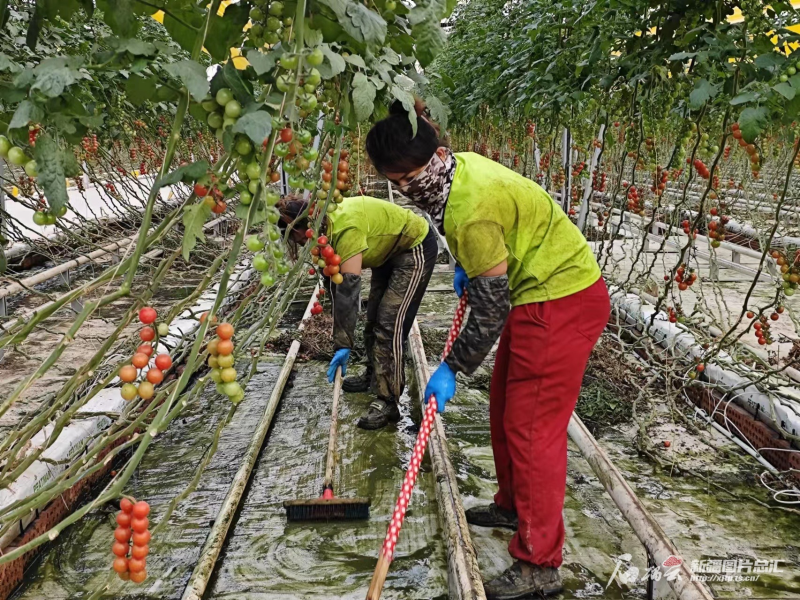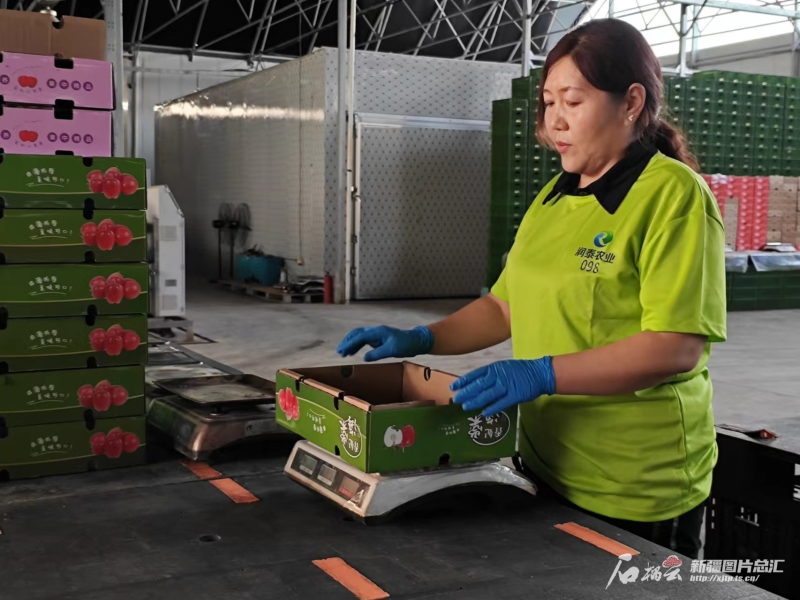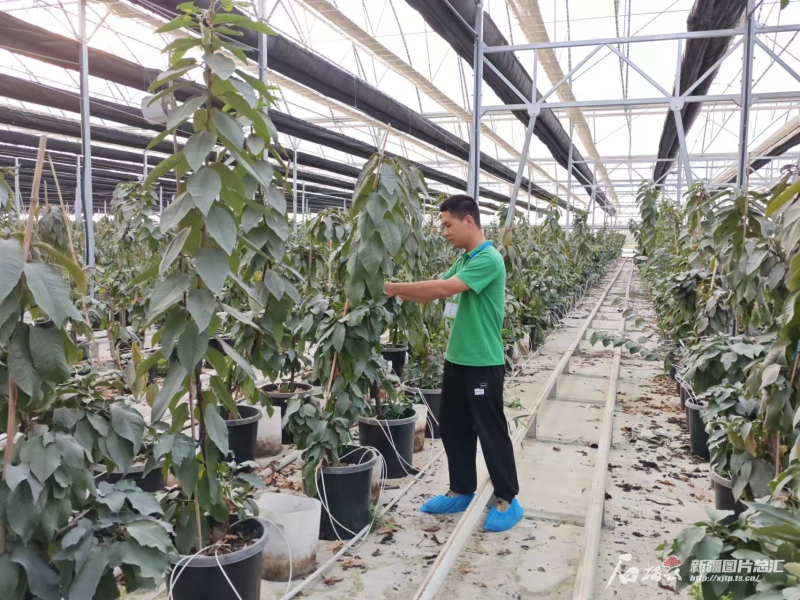Shiliuyun-Xinjiang Daily (Reporter Song Haibo) news: On September 24, 2024, within the high-tech intelligent greenhouse of the Runtai Agricultural Technology Development Co., Ltd. in Kekedala City, northwest China’s Xinjiang Uygur Autonomous Region, the soilless cultivation racks, over ten meters tall, stand without any dust. Clusters of tomatoes hang like pearls, plump and jade-like, resembling colorful lanterns. Here, employee Rebiyanmu Silamu diligently clears fallen tomato leaves. Residing in Huocheng County, she, along with several friends from her village, is employed here. This modern smart agriculture park spans nearly 20 hectares, showcasing advanced techniques in contemporary agriculture while providing nearly 200 job occupations, invigorating the local economy.

Photo shows staff members clean tomato leaves from a greenhouse of the Runtai Agricultural Technology Development Co., Ltd. in Kekedala City, northwest China’s Xinjiang Uygur Autonomous Region. (Photo by Shiliuyun-Xinjiang Daily/ Song Haibo)
Inside the greenhouse, the environment is maintained at a constant temperature throughout the year, and high-tech farming methods are used extensively. Tang Yue, executive director of Runtai Agricultural Technology Development Co., Ltd., explains that these tomatoes are grown using soilless technology, with coconut coir as the growing medium. Made from all-natural coconut shells, coco coir is organic and free from traditional soil constraints. The greenhouse is equipped with an array of precise sensors that serve as insightful observers, monitoring and regulating environmental parameters for tomato growth, ensuring that each plant thrives under optimal conditions. "We have also introduced bumblebee pollination in the greenhouse, which increases effective pollination between flowers and significantly improves both the yield and quality of the vegetables."
With the backing of modern technology, the tomatoes grown in this greenhouse see production costs reduced by over 40 percent compared to traditional methods, with mechanization levels surpassing 90 percent. The irrigation water usage has been minimized to merely one-twentieth of what conventional agriculture requires, realizing the efficiency and environmental benefits of smart agriculture.

Photo shows staff members select tomatoes in the Runtai Agricultural Technology Development Co., Ltd. in Kekedala City, northwest China’s Xinjiang Uygur Autonomous Region. (Photo by Shiliuyun-Xinjiang Daily/ Song Haibo)
Chu Zhenwu, general manager of the Runtai Agricultural Technology Development Co., Ltd., said that with meticulous cultivation, tomato plants can reach an average height of 18 meters. During their 20-month growth period, each plant can yield nearly 20 kilograms, with fruit clusters limited to between 12 and 16 tomatoes. "Since planting 90,000 tomato plants last June, we have already harvested over 600 tons, generating nearly 40 million yuan (about 5.70 million U.S. dollars) in sales revenue."
In 2021, Chu led a team from Beijing for a field trip in Kekedala City. "We discovered that the transportation network here is well-developed and the lighting conditions are exceptional, making it suitable for the development of smart agriculture."
Zhang Wenbo, a technician at the Runtai Agricultural Technology Development Co., Ltd., who graduated from university just a year ago, manages one hectare of cherries. "Modern agriculture requires continuous learning of new technologies, and every time I see the fruits and vegetables being harvested, I feel a great sense of accomplishment."

Photo shows a staff member pruns cherry branches in a greenhouse of the Runtai Agricultural Technology Development Co., Ltd. in Kekedala City, northwest China’s Xinjiang Uygur Autonomous Region. (Photo by Shiliuyun-Xinjiang Daily/ Song Haibo)
"The park is continually optimizing its planting structure to strive for the certification of a standardized production base for green foods," said Tang Yue. Moving forward, the park will continually introduce cutting-edge technological equipment and attract talents from both within and outside the region for employment. Additionally, it aims to drive employment growth through characteristic industries, providing more job occupations for surrounding villagers and exploring a new path for rural revitalization.
(A written permission shall be obtained for reprinting, excerpting, copying and mirroring of the contents published on this website. Unauthorized aforementioned act shall be deemed an infringement, of which the actor shall be held accountable under the law.)









